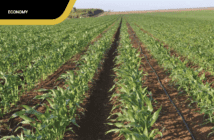By Derek Mutiso
Experts Predict That Kenya Is Likely To Face Increased Price Pressures in Coming Months
As Central Banks around the world continue to raise interest rates, financial conditions have tightened across the board. Challenges to financial stability have increased considerably due to the highly unpredictable global environment we are living in. The biggest hurdles for financial systems at the moment include;
- Inflation – which has hit multi-decade highs.
- A general decline of economic outlooks in many countries.
- Persistent geopolitical risks.
The Central Bank of Kenya (CBK) increased its benchmark interest rate on September 29, 2022 by the largest margin in more than seven years, paving the way for expensive credit for citizens and businesses alike. In order to ground inflation expectations, the benchmark interest rate was increased by 75 basis points to 8.25 per cent. This was done to combat inflation which hit 9.2 per cent in September, up from 8.5 per cent in August 2022. The Monetary Policy Committee -MPC of the CBK stated that it stands ready to take additional measures if necessary.
The CBK usually targets inflation at between 2.5% to 7.5%. The breach of the target coupled with dollar-denominated government loans pressured the CBK to raise interest rates more quickly. The CBK raised the benchmark rate, arguing that tighter monetary policies were necessary, given the impact that growing inflation and global uncertainties were having on the local economy. This was in line with the US Federal Reserve’s September rate increase. Governments with growing debt, like Kenya, as well as non-bank financial entities like insurers, pension funds, hedge funds, and mutual funds, are more financially vulnerable when inflation hits the global economy. Entities with stretched balance sheets, have also been hit hard by the rising rates.
In a statement, the Kenya National Bureau of Statistics (KNBS) Director General Macdonald Obudho said, “The rise in inflation was largely due to increase in prices of commodities under food and non-alcoholic beverages (15.5 pc), transport (10.2 pc), and housing, water, electricity, gas and other fuels (7.3pc), between Sept 2021 and Sept 2022.” Further data from KNBS showed that the Consumer Price Index (CPI), which calculates the percentage change in the price of a basket of goods and services consumed by households in an economy, increased by 0.4 per cent from an index of 125.05 in July 2022 to 125.58 in August 2022.
The cost of water, housing, electricity and gas went up by 2.5% between August and September 2022, largely due to an increase in electricity prices. These prices were chiefly driven up by a 46.7% increase in the cost of fuel energy. A 14.6% increase in the price of kerosene was also reported. The furnishing, household equipment, and routine household maintenance index recorded a 10.7 per cent increase during the period under review; this was partly due to an increase in the cost of laundry soap and detergents. Further, prices of maize flour, beans, and unbroken aromatic rice increased by 8.4 per cent, 3.5 per cent, and 2.9 per cent in September, respectively.
During the same period, prices of tomatoes and carrots dropped by 10.2 per cent and 7.2 per cent respectively. Relative to the previous month, a number of quick growing vegetables showed price falls,” KNBS noted. Experts predict that Kenya is likely to face increased price pressures in the coming months. Research shows that the two major drivers of inflation in Kenya’s consumer price index are food and energy. It is with this in mind that the government announced a fertilizer subsidy, to boost the agricultural sector which had been negatively affected by failed rains, among other challenges.
“The Government has availed Ksh 3.55 Billion, to subsidize 71,000 Mt (1.42 million x 50 kg bags) of fertilizer, for growing food crops during the short rains, “PS Crops Development and Agricultural Research Dr. Francis Owino said in a statement. This follows a directive by President William Samoei Ruto in his inauguration Speech on Tuesday 13th September 2022. He directed that 1.4 million bags of fertilizer be availed to farmers at a maximum subsidized price of Ksh 3,500 per 50kg bag down from Ksh 6,500, as part of the Government’s interventions to address the high cost of living.
Why is inflation going up in Kenya?
30%- 50% percent of Kenya’s imported wheat comes from Russia and Ukraine. In2022, Ukraine exported 60% less wheat than it did in 2021 — this consequently increased the cost of wheat, and wheat-based products like bread.
Another cause for concern, and root cause of inflation is a weakening Kenya Shilling. The official shilling-dollar exchange rate published by the (CBK) stood at 121.33 units on 31st October. The shilling has depreciated by 6.8 percent against the dollar since the beginning of 2022, this is attributed to strong demand for the American currency. Global economic uncertainty arising out of the Russia-Ukraine conflict and high inflation in western countries has strengthened dollar demand — with many central banks choosing to hold the asset as a buffer against potential future economic upheavals and for capital gains.
The weakening of the Kenya Shilling was also caused, in part by high oil prices, election-period uncertainty, and dollar demand by businesses in the manufacturing and energy sectors, as well as importers of general goods. Unreliable rainfall has also greatly reduced Kenya’s production of maize and other food crops to between 15% and 20% below the five-year average.
According to the International Monetary Fund (IMF), in Sub-Saharan Africa, inflation has been driven less by domestic activity than in advanced economies. Instead, external developments have shaped the path of inflation since the start of the pandemic. However, some domestic activities in Kenya also contribute to inflation because they increase the cost of products. Services-tax increments are one example. The 2022 budget introduced a set of new taxes. The government did this to increase revenue without adding to its debt load.
The elephant in the room in regards to rising inflation has always been corruption and misappropriation of public funds, meant for development projects. Common tax payers pay the price when tender-preneurs cut deals with corrupt government officials to supply goods at inflated prices. The importation of certain goods has also been controlled by powerful cartels who sometimes collude with each other to raise the prices of essential goods.
Former President Uhuru Kenyatta placed the cost of corruption to the Kenyan economy at 2 billion shillings annually, a figure some experts are not in agreement with. In a report compiled by the UN-funded anti-graft agency, Global Fund; irregular government expenditure amounting to Sh7.8 billion, was revealed as a result of tenders that were illegally awarded to politically connected individuals and companies to supply medical goods and services during the COVID-19 pandemic. This is just one of many corruption scandals that happen in Kenya.
What should be done differently?
To keep inflation down, Kenyan policymakers favor price regulation-specifically price cuts, even though they have historically been shown to be ineffective in the long run, because they are so hard to sustain and implement. In Kenya, if some suppliers can’t turn a profit, they simply hoard goods and play the long-game–waiting for prices to go up again; and they usually do, before long. It is necessary for the government to use long-term strategies instead.
To deal with the external causes of inflation, the IMF recommends that, emerging and frontier markets should control inflation by reducing their debt risk through:
- Early engagement with creditors.
- Multi-lateral cooperation.
- International support from friendly, wealthier nations.
The IMF further advices emerging economies to arrange for preemptive debt restructuring discussions with creditors in order to avoid pricey default penalties.
“Central banks must act resolutely to bring inflation back to target and avoid a de-anchoring of inflation expectations, which would damage their credibility. Clear communication about policy decisions, commitment to price stability, and the need for further tightening will be crucial to preserve credibility and avoid market volatility.”
“Exchange rate flexibility helps countries adjust to the differential pace of monetary policy tightening across countries, but policymakers face an unusually challenging financial stability environment. Though no globally systemic event has materialized so far, they should contain further buildup of vulnerabilities by adjusting selected macro prudential tools to tackle any pockets of risk. In this highly uncertain environment, striking a balance between containing these potential threats and avoiding a disorderly tightening of financial conditions will be critical,”
Kenya could bring down prices of certain essential commodities by getting rid of cartels and allowing more people to import these goods. This will in turn increase the supply of these essentials and reduce their cost. Competition and deregulation are some of the most formidable weapons against inflation.
For a long time now, Kenya’s economy has been over-reliant on domestic consumption; which is the main driver of our Gross Domestic Product (GDP). It contributed 75% of GDP in 2021. Exports, on the other hand have been declining steadily in relative importance. Kenya’s top four exports combined do not generate enough revenue to cover the cost of oil imports alone, let alone other imports. Due to our current economic Imbalances, it will be difficult for Kenya to sustain strong GDP growth moving forward unless we become more competitive in the export market
Kenya’s balance of trade undoubtedly falls short of its potential. Merchandise exports have grown slowly and inconsistently, averaging only about 10% annually. In the meantime, Kenya’s export figures have been fairly erratic, with a few successful years followed by significant declines. The drivers of export expansion in Kenya have also remained low for many years now. Overall, few new export products or markets have been created. There is need for more innovation and efficiency. New factories should be built, and old ones should be revived as well. The government needs to incentivize potential exporters by cutting red-tape and eliminating bureaucratic hurdles.
The author is a Business Writer




